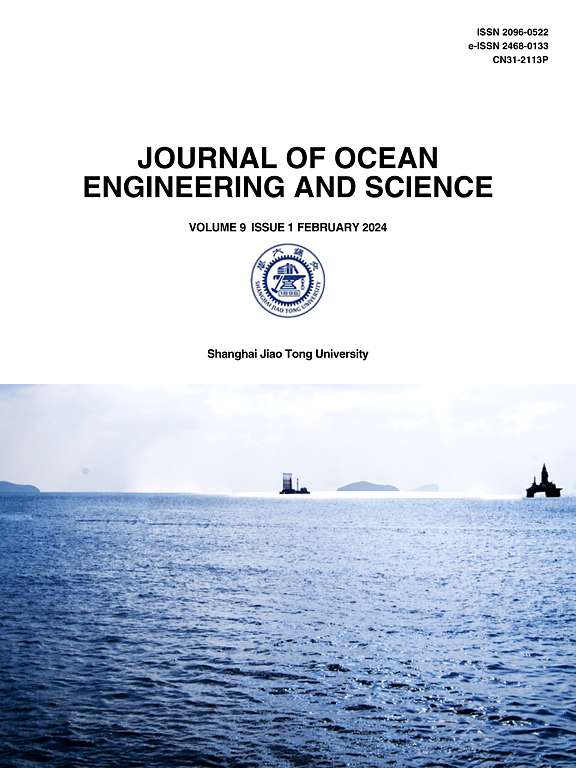Conceptual prediction of harbor sedimentation quantities using AI approaches to support integrated coastal structures management
IF 11.8
1区 工程技术
Q1 ENGINEERING, MARINE
引用次数: 0
Abstract
Sedimentation is one of the most critical environmental issues facing harbors’ authorities that results in significant maintenance and dredging costs. Thus, it is essential to plan and manage the harbors in harmony with both the environmental and economic aspects to support Integrated Coastal Structures Management (ICSM). Harbors' layout and the permeability of protection structures like breakwaters affect the sediment transport within harbors’ basins. Using a multi-step relational research framework, this study aims to design a novel prediction model for estimating the sedimentation quantities in harbors through a comparative approach based on artificial intelligence (AI) algorithms. First, one hundred simulations for different harbor layouts and various breakwater characteristics were numerically performed using a coastal modeling system (CMS) for generating the dataset to train and validate the proposed AI-based models. Second, three AI approaches namely: Support Vector Regression (SVR), Gaussian Process Regression (GPR), and Artificial Neural Networks (ANN) were developed to predict sedimentation quantities. Third, a comparison between the developed models was conducted using quality assessment criteria to evaluate their performance and choose the best one. Fourth, a sensitivity analysis was performed to provide insights into the factors affecting sedimentation. Lastly, a decision support tool was developed to predict harbors' sedimentation quantities. Results showed that the ANN model outperforms other models with mean absolute percentage error (MAPE) equals 4%. Furthermore, sensitivity analysis demonstrated that the main breakwater inclination angle, porosity, and harbor basin width affect significantly sediment transport. This research makes a significant contribution to the management of coastal structures by developing an AI data-driven framework that is beneficial for harbors' authorities. Ultimately, the developed decision-support AI tool could be used to predict harbors' sedimentation quantities in an easy, cheap, accurate, and practical manner compared to physical modeling which is time-consuming and costly.
使用人工智能方法进行港口沉积量的概念预测,以支持综合海岸结构管理
泥沙淤积是港口当局面临的最重要的环境问题之一,它导致了大量的维护和疏浚成本。因此,港口的规划和管理必须与环境和经济方面相协调,以支持综合海岸结构管理(ICSM)。港口布局和防波堤等防护结构的渗透性影响着港口盆地内泥沙的输运。本研究采用多步骤关联研究框架,设计了一种基于人工智能(AI)算法的比较方法预测港口泥沙淤积量的新模型。首先,使用海岸建模系统(CMS)对不同港口布局和各种防波堤特征进行了100次数值模拟,以生成数据集,以训练和验证所提出的基于人工智能的模型。其次,采用支持向量回归(SVR)、高斯过程回归(GPR)和人工神经网络(ANN)三种人工智能方法预测沉降量。第三,采用质量评价标准对已开发的模型进行比较,评价其性能并选择最佳模型。第四,进行敏感性分析,以深入了解影响沉积的因素。最后,开发了一个决策支持工具来预测港口的沉积量。结果表明,人工神经网络模型优于其他模型,平均绝对百分比误差(MAPE)为4%。敏感性分析表明,主防波堤倾角、孔隙度和港池宽度对泥沙输运有显著影响。本研究通过开发有利于港口当局的人工智能数据驱动框架,为沿海结构的管理做出了重大贡献。最终,与耗时昂贵的物理建模相比,开发的决策支持AI工具可以以简单,廉价,准确和实用的方式预测港口的沉积量。
本文章由计算机程序翻译,如有差异,请以英文原文为准。
求助全文
约1分钟内获得全文
求助全文
来源期刊

Journal of Ocean Engineering and Science
Multiple-
CiteScore
11.50
自引率
19.70%
发文量
224
审稿时长
29 days
期刊介绍:
The Journal of Ocean Engineering and Science (JOES) serves as a platform for disseminating original research and advancements in the realm of ocean engineering and science.
JOES encourages the submission of papers covering various aspects of ocean engineering and science.
 求助内容:
求助内容: 应助结果提醒方式:
应助结果提醒方式:


